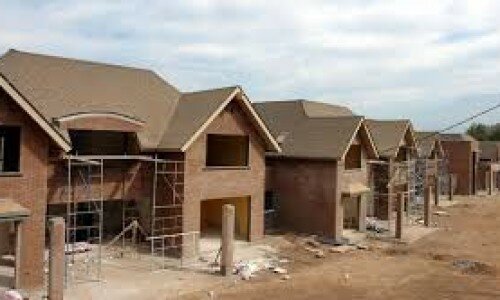
‘Something for everyone’ developers told as Birmingham aims for 80,000 new homes
Forty sites across Birmingham capable of delivering thousands of new houses with a value of £9 billion have been identified by city council planners.
All are brownfield land and are contained in the Birmingham Housing Prospectus, the first time the city has listed all possible development locations in one document.
The prospectus was being launched in front of potential investors today at the MIPIM international property fair in Cannes, with the strapline ‘there’s something for everyone here’.
However, the launch came with warnings about the impact on the property market of ‘booming Birmingham’ as the city continues to attract thousands of young professionals from London and the south-east keen to take advantage of cheaper housing in the West Midlands.
Average house prices in the region are £198,000, which is stoking the market as supply lags behind demand and a 17 per cent increase in prices over the next four years has been forecast by estate agents Knight Frank.
Some 5,500 Londoners in their thirties moved to Birmingham last year alone – the highest of any regional city – and many of the newcomers may have been attracted by the latest Mercer Quality of Living Survey in which Birmingham is ranked as having the best of quality of life of any UK city outside London.
City council leaders insist Birmingham needs at least 80,000 new homes by 2031 to cope with a forecast increase in population of 150,000, but they say there is sufficient space within the city boundaries for only 51,000 homes.
Controversially, the council says it must build up to 6,000 houses in the Sutton Coldfield green belt because there is not enough available brownfield land in Birmingham.
The forecasts were recently the subject of fierce argument at a public inquiry into the Birmingham Development Plan where Birmingham council planners put the case for building as many as 23,000 homes on green field sites across the city border in Warwickshire, Worcestershire and Staffordshire.
A planning inspector will rule on the suitability of the development plan later this year.
Birmingham’s efforts to sell development land at MIPIM proved successful last year when Persimmon agreed to buy the 43-acre Selly Oak Hospital site and is planning to build 650 homes. City council leader Sir Albert Bore said:
Today’s Prospectus says loud and clear to developers that Birmingham is open for business, and that we mean business.
The city is unrecognisable from a decade ago thanks the unprecedented amount that has been invested in growth. Businesses are flocking in record numbers, legions of young professionals are arriving, and start-ups are thriving.
That success has brought an exciting housing challenge. It is a challenge we are determined to meet.
Council spokesperson said Birmingham was well placed to attract the investment it needs thanks to “a combination of rapid growth, heavy investment in infrastructure and transport links, and comparatively low property prices” which had transformed the city into a “world-leading property investment destination since the 2008 downturn”.
A recent PwC report revealed Birmingham was the 6th most attractive city in Europe for property investment, outstripping London in 10th place, with the largest mix of residential, commercial and leisure development opportunities in Britain.
Waheed Nazir, Director of Planning and Regeneration at Birmingham City Council, commented:
Traditionally, developers and investors have had to do all their own research, or employ land agents to find the best sites. We have made it easy for them by listing them all in this document all of the key sites for new housing.
There is something in there for everyone – sites for student housing, sites for apartment development, for private rented developments, or for traditional suburban development of houses for rent and sale.
We want to use the Prospectus to encourage inward investment into Birmingham, so even if a developer or investor is coming from outside the city – whether that be from London, Glasgow or Abu Dhabi – they can find all of the key residential opportunities in one document, together with the essential contacts for each site.
Mark Evans, partner at Knight Frank, added:
It is clear that Birmingham is enjoying a post-recession renaissance, not only in terms of jobs and business growth, but also in the fabric of the city. What we are seeing is that the activity in Birmingham is also helping feed the strong demand for housing, not only from the domestic population but also from those from London and the South East looking to take advantage of the price.
The city’s mix of regeneration, re-development and job creation, as well as the relatively lower entry price for property, means that its draw to homebuyers and investors will likely continue to grow in the coming years. Furthermore the investment in infrastructure means that the city has a stronger base moving forward which will hopefully ensure the city is better placed in the future. This is all leading to greater interest from commercial occupiers in the city.
Similar Articles
PM: gave unlawful advice; frustrated Parliament
"Scenes." As young people would say, writes Kevin Johnson. "Unlawful." "Unequivocal." "Historical." These words are not,
WMCA: Nothing to see here…move along
As the Prime Minister prepared to address leaders ‘up North’ gathering for the Convention of
HS2: new driver needed
Is the Oakervee Review "welcome", "frustrating" or the end of the line for HS2, asks
Dawn goes Down Under
It might appear that Birmingham city council changes its chief executives more regularly than its
Hezza: Give Metro Mayors greater powers to deliver housing, skills and jobs
Britain’s metro mayors should be given greater powers over housing, schools and jobs to truly










